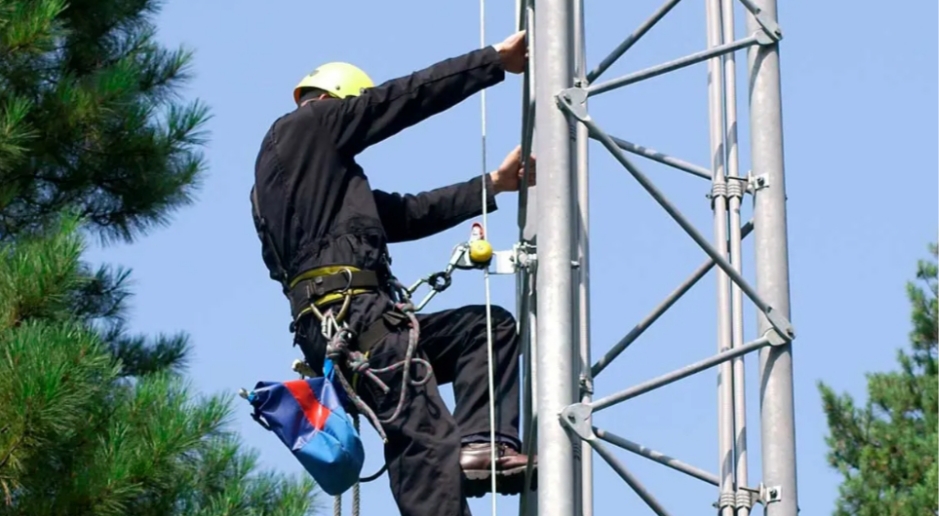Table of Contents
Introduction
In the realm of workplace safety, few elements are as crucial as fall protection. For workers who operate at heights, the risks associated with falls are ever-present. In this blog, we delve into the life-saving importance of properly installed fall arrest systems, exploring the critical role they play in ensuring the well-being of workers who operate in elevated environments.
Understanding Fall Arrest Systems
Defining Arrest Systems
An arrest system is a crucial component of occupational safety designed to prevent workers from falling from elevated workspaces. It consists of several elements, including anchor points, harnesses, lanyards, and connectors. When a fall occurs, the system is activated, arresting the fall and limiting the impact forces on the worker’s body.
Components of an Arrest System
A well-designed arrest system comprises key components that work in tandem to ensure effective protection. Anchor points are securely attached to structures, providing a stable point for connecting other elements. Harnesses are worn by workers and serve as a means of attachment to the system. Lanyards and connectors act as the link between the harness and anchor points, allowing for freedom of movement while ensuring safety in the event of a fall.
The Life-Saving Importance of Fall Arrest
Prevention of Fatalities
In workplaces where falls are a potential hazard, the installation and proper use of fall systems are paramount to preventing fatalities. The immediate arrest of a fall prevents the worker from striking lower levels or structures, greatly decreasing the likelihood of fatal injuries. The importance of this cannot be overstated, as it directly contributes to preserving lives and ensuring that workers return home safely at the end of each day.
Reducing Severity of Injuries
Even in cases where an arrest system doesn’t prevent the fall entirely, it plays a critical role in reducing the severity of injuries. By distributing the impact forces and providing a controlled descent, the system minimizes the risk of fractures, spinal injuries, and other trauma that may result from an uncontrolled fall.
Empowering Workers with Confidence
Workers equipped with properly installed fall arrest systems gain a sense of confidence in their ability to perform tasks at elevated heights. This empowerment stems from the assurance that should a fall occur, the system is in place to arrest the descent, minimizing the potential for severe injury.
Proper Installation and Training
The Crucial Role of Anchorage Points
An often overlooked but critical aspect of arrest systems is the anchorage point. The anchor point must be securely attached to a structure capable of withstanding the forces generated during a fall. Improperly installed or inadequate anchorage can compromise the effectiveness of the entire system, emphasizing the importance of proper installation.
The Need for Regular Inspections
The reliability of arrest systems hinges on regular inspections and maintenance. Employers must establish protocols for routine checks to ensure that every component of the system is in optimal working condition. From harnesses to lanyards and anchor points, regular inspections are key to identifying and addressing potential issues before they compromise safety.
Ongoing Training and Awareness
Equipping workers with arrest systems is not enough; proper training is equally essential. Workers must be well-versed in the correct usage of the system, including how to inspect equipment, properly wear harnesses, and connect to anchor points. Ongoing training programs and awareness campaigns contribute to a safety culture where every worker understands the importance of fall protection.
Regulatory Compliance and Best Practices
Meeting Regulatory Standards
In many regions, regulatory standards mandate the use of arrest systems in industries where working at heights is a routine part of the job. Compliance with these standards is not just a legal requirement; it is a commitment to ensuring the safety and well-being of workers. Employers must familiarize themselves with relevant regulations and implement fall protection measures accordingly.
Best Practices for Fall Protection Programs
Beyond meeting minimum regulatory standards, adopting best practices for fall protection programs further enhances workplace safety. This includes conducting comprehensive risk assessments, providing adequate training, and fostering a culture of safety where employees are actively engaged in the prevention of falls.
Factors Affecting Fall Arrest System Effectiveness
Compatibility with Work Environment
The effectiveness of an arrest system is influenced by its compatibility with the specific work environment. Systems must be tailored to the nature of the tasks performed, considering factors such as the type of structure, available anchor points, and the range of movement required by workers.
Regular Inspection and Maintenance
Regular inspection and maintenance are integral to ensuring the ongoing effectiveness of arrest systems. Wear and tear, exposure to the elements, and usage over time can impact the performance of components. Routine checks and timely replacements or repairs are essential to guarantee that the system functions as intended when needed.
Conclusion:
In conclusion, the life-saving importance of properly installed fall arrest systems cannot be overstated. These systems serve as a last line of defence against the potentially devastating consequences of falls in the workplace. From mitigating impact forces to preventing fatalities and reducing the severity of injuries, arrest systems play a pivotal role in safeguarding the lives of workers who operate at heights.
As we continue to advance in various industries, we must prioritize the implementation, proper installation, and ongoing maintenance of arrest systems. Only through a comprehensive commitment to fall protection can we ensure that those who reach new heights in their work return home safely each day.






